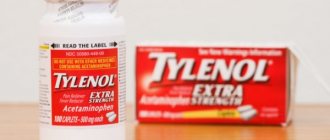Write a review
Reviews: 0
Manufacturers: Bryntsalov-A (Russia)
Active ingredients
- Ampicillin
- Oxacillin
Disease class
- Acute upper respiratory tract infection of multiple and unspecified localization
- Bacterial pneumonia, unspecified
- Acute lower respiratory tract respiratory infection, unspecified
- Syndrome of staphylococcal skin lesions in the form of burn-like blisters
- Impetigo
- Skin abscess, boil and carbuncle
- Phlegmon
- Acute lymphadenitis
- Pilonidal cyst
- Other local infections of the skin and subcutaneous tissue
- Cholecystitis
- Cholangitis
- Gonococcal infection
- Thermal and chemical burns of several areas of the body
- Thermal and chemical burns of unspecified localization
- Thermal burns classified according to the area of the body surface affected
- Chemical burns classified according to the area of the body surface affected
- Surgical practice
- Chronic tubulointerstitial nephritis
Clinical and pharmacological group
- Not indicated. See instructions
Pharmacological action
- Antibacterial
Pharmacological group
- Penicillins in combinations
Pharmacodynamics and pharmacokinetics
Pharmacodynamics
An antibiotic belonging to semi-synthetic penicillins , it contains a combination of ampicillin and oxacillin and combines the spectrum of their action on microorganisms. Acid-resistant, bactericidal.
Shows activity against gram-positive ( pneumococcus , streptococcus , staphylococcus ) and gram-negative ( E. coli , meningococcus , Shigella , gonococcus , influenza bacillus , salmonella ) microorganisms. The presence of oxacillin makes the drug active against penicillinase-resistant staphylococci . Pseudomonas aeruginosa , many strains of Proteus vulgaris , Morganella are resistant to the action of Ampiox .
Pharmacokinetics
The maximum concentration in the blood of both antibiotics is observed 30-50 minutes after intramuscular administration. Both antibiotics are excreted by the kidneys and partially in the bile. No accumulation is observed with repeated administrations.
Side effects
Allergic reactions: urticaria, skin hyperemia, angioedema, rhinitis, conjunctivitis; fever, arthralgia, eosinophilia, in rare cases - anaphylactic shock;
From the digestive system: change in taste, nausea, vomiting, diarrhea, rarely - pseudomembranous enterocolitis,
From the hematopoietic system: leukopenia, neutropenia, anemia.
General reactions: superinfection, dysbacteriosis.
Local reactions: phlebitis and periphlebitis (with intravenous administration); with IM - infiltration and pain at the injection site.
Indications for use
- sinusitis , otitis media ;
- tonsillitis;
- bronchitis , pneumonia ;
- cholecystitis;
- pyelonephritis;
- cystitis , urethritis ;
- cervicitis;
- erysipelas , impetigo ;
- endocarditis , meningitis ;
- prevention of postoperative complications;
- postpartum infection.
Instructions for use of Ampiox (Method and dosage)
The drug has two dosage forms.
Ampiox tablets, instructions for use
Ampiox Health capsules are taken orally. For adults and children 14 years of age, a single dose of 0.5-1.0 g (2-4 capsules), which is taken 4 times a day, so the daily dose is 2-4 g. Children aged 7-9 years are prescribed 1. 25 g per day, 10-14 years – 1.75 g per day. The duration of treatment depends on the disease and ranges from 7 days to 2 weeks.
Ampiox injections, instructions for use
Before prescribing injections of this drug, it is necessary to determine the sensitivity of the microflora to it. Ampiox sodium , intended for injection, is administered intramuscularly or intravenously by dissolving the powder in water for injection.
A single dose for adults is 0.5-1.0 g, it is administered 4 times a day after 6-8 hours. If necessary, the dose is increased by 1.5-2 times. Newborns are prescribed 100-200 mg per kg of body weight per day. The course of treatment is from 7 to 21 days.
For intravenous administration, the drug is dissolved in 15 ml of saline and administered slowly. For intravenous drip use, dissolve in 200 ml of saline solution. For drip administration, children are given a 5% glucose in an amount of 30-100 ml. The solutions are used immediately. Intravenously administered for 5-7 days, if necessary, switch to intramuscular administration.
special instructions
During a course of treatment, it is necessary to monitor the state of the function of the hematopoietic organs, liver and kidneys.
The possibility of developing superinfection (due to the growth of microflora insensitive to it) requires a corresponding change in antibacterial therapy.
In patients who are hypersensitive to penicillins, cross-allergic reactions with cephalosporin antibiotics are possible.
When used in high doses in patients with renal failure, toxic effects on the central nervous system are possible.
Interaction
The following drugs slow down absorption and reduce its degree: glucosamine , antacids , laxatives, aminoglycosides , and food intake. Ascorbic acid enhances the absorption of active substances. Antibiotics rifampicin , aminoglycosides , vancomycin , cephalosporins have a synergistic effect . And macrolides , sulfonamides , chloramphenicol , tetracyclines , lincosamides are antagonistic.
Ampiox enhances the effects of anticoagulants and reduces the effect of oral contraceptives. Diuretics, allopurinol , NPVN , phenylbutazone , probenecid , increase the concentration of active substances in plasma, which entails a risk of toxicity. Taking allopurinol increases the risk of developing a rash.
Use of the drug during pregnancy
A common mistake is doctors refusing to prescribe antibacterial therapy. During pregnancy , with pneumonia due to fear of the negative effects of medications on the fetus. In fact, the list of antibacterial drugs contraindicated during this period is very limited - these are tetracyclines , sulfonamides , chloramphenicol , co-trimoxazole , aminoglycosides and fluoroquinolones . β-lactam antibiotics , which include Ampiox, as well as macrolides, are used in pregnant women. These are non-toxic antibiotics that had no effect on the fetus.
Similar drugs:
- Furacilin Solution for topical use
- Lactobacterin siccum dry (Lactobacterin siccum) Lyophilisate for the preparation of solution for oral administration
- Palin Capsule
- Bactrim Oral suspension
- Nitroxoline Oral tablets
- Pancef Oral tablets
- Nifuroxazide (Nifuroxazide) Oral tablets
- Ercefuryl Oral suspension
- Sextaphag Oral solution
- Pancef Granules for the preparation of suspension for oral administration
** The Drug Directory is intended for informational purposes only. For more complete information, please refer to the manufacturer's instructions. Do not self-medicate; Before starting to use the drug Ampiox-sodium, you should consult a doctor. EUROLAB is not responsible for the consequences caused by the use of information posted on the portal. Any information on the site does not replace medical advice and cannot serve as a guarantee of the positive effect of the drug.
Are you interested in the drug Ampiox-sodium? Do you want to know more detailed information or do you need a doctor's examination? Or do you need an inspection? You can make an appointment with a doctor - the Euro lab is always at your service! The best doctors will examine you, advise you, provide the necessary assistance and make a diagnosis. You can also call a doctor at home . Euro lab clinic is open for you around the clock.
** Attention! The information presented in this medication guide is intended for medical professionals and should not be used as a basis for self-medication. The description of the drug Ampiox-sodium is provided for informational purposes and is not intended for prescribing treatment without the participation of a doctor. Patients need to consult a specialist!
If you are interested in any other drugs and medications, their descriptions and instructions for use, information about the composition and form of release, indications for use and side effects, methods of use, prices and reviews of drugs, or you have any other questions and suggestions - write to us, we will definitely try to help you.
Ampiox's analogs
Level 4 ATC code matches:
Hiconcil
Ampicillin Trihydrate
Ampicillin
Ospamox
Amoxicar
Penicillin
Flemoxin Solutab
Amoxicillin
Amosin
Amoxil
Ecoball
Synonyms of the drug: Ampicillin + Oxacillin-Borimed , Oxamp capsules , Oxamp-sodium (powder), Oxampicin , Oxamsar . Analogues - Amoxiclav , Amoxicillin .
Reviews
The drug has been known for more than 30 years, and in 1995, the Borshchagovsky Chemical Plant launched the production of the antibiotic Ampiox in capsules, replacing the tablet form. And if in those years the drug was actively used, recently it has given way to more effective ones.
Reviews about the drug are mixed. Most evidence suggests that it is effective for mild infections. At the moment, it is rarely prescribed by doctors, especially when it comes to outpatient treatment of, say, pneumonia . In outpatient practice amoxicillin , amoxicillin / clavulanate , oral cephalosporins , and macrolides ( azithromycin ) are recommended.
According to experts, the doses of ampicillin and oxacillin in this drug are much lower than therapeutic ones, in addition, the different degrees of their metabolism make the drug ineffective. Instead of the previously popular intramuscular injections of Ampiox , augmentin , oxacillin smallpox , flemoxin , produced in oral forms, are used to treat children.
The drug is also ineffective for urinary tract infections, since uropathogenic strains of Escherichia coli have a high level of resistance to aminopenicillins . This may be why the drug appears less often in the pharmacy chain, as evidenced by patient reviews.
“... Lately I can’t find Ompiox in pharmacies, neither Russian nor Ukrainian.”
Bicyclol, 25 mg, tablets, 18 pcs.
The active substance of the drug Bicyclol is a lignan in its chemical structure.
The use of the drug Bicyclol helps to reduce the increased activity of liver transaminases in hepatitis of various etiologies. The protective effect of the drug Bicyclol has been proven in in vitro and in vivo models simulating various farms of liver damage: carbon tetrachloride (CC l 4) - damage to biomembranes, necrosis, liver fibrosis, acetaminophen (AP) - depletion of glutathione in hepatocytes, D-galactosamine - damage /(NC of the hepatocyte nucleus, BCG vaccine and coicavalin A (CopA) - immune damage. Under the influence of Bicyclol, pathomorphological disorders of the structure of the liver tissue are restored to varying degrees. Bicyclol inhibits the production of tumor necrosis factor (TNF-a) by active neutrophils, Kupffer cells and macrophages , and also helps to reduce the intensity of free radical processes in cells. Bicyclol inhibits oxidative activity caused by impaired mitochondrial function, which prevents necrosis and apoptosis of hepatocytes. Bicyclol also inhibits the apoptosis of hepatocytes stimulated by TNF-x and cytotoxic T cells, leading to the restoration of nuclear damage and hepatocyte DNA.
In vivo studies in a model of liver damage with AR have demonstrated that pre-administration of bicyclol significantly reduces the degree of damage to hepatocytes, which is expressed in a decrease in the activity of alanine aminotransferase (ALT) and aspartate aminotransferase (AST), markers of hepatocyte necrosis, a decrease in the release of cytochrome C and apoptosis. inducing factors from mitochondria, as well as preventing DNA defragmentation.
In vitro studies also found that Bicyclol is able to suppress the excretion of HBeAg, H BsAg and DNA replication of the hepatitis B virus.
The results of clinical studies of the drug Bicyclol in patients with chronic viral hepatitis C of moderate activity demonstrated that when it is prescribed at a dose of 150 mg per day for 12 weeks, there is a statistically significant decrease in the biochemical indicators of the inflammatory process in the liver (transaminase activity (ALT, AST), total, direct and indirect bilirubin), as well as reducing the manifestations of astheno-vegetative syndrome and improving the quality of life of patients. The data obtained indicate the presence of an anti-inflammatory hepagoprotective effect in the drug Bicyclol when used as monotherapy in patients with chronic viral hepatitis C.
The drug Bicyclol, when prescribed at a dose of 150 mg per day for 12 weeks, is characterized by a favorable safety profile and good tolerability.


